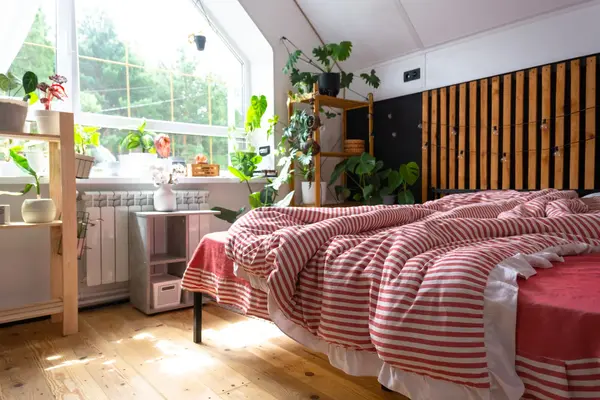Bedroom
What Qualifies a Room as a Bedroom?

Understanding what defines a bedroom is essential for homebuyers, sellers, and homeowners, as it impacts both property value and safety regulations. The classification of a room as a bedroom can affect a home’s market price and tax assessment, making it crucial to adhere to legal and safety standards.
Why Bedroom Classification Matters
A home’s value often increases with the number of bedrooms, making it beneficial for sellers to classify as many rooms as bedrooms as possible. However, mislabeling a space can lead to legal issues. Additionally, tax assessments may be influenced by the number of bedrooms in a home, which could lead to higher property taxes.
Building codes vary by state and determine the specific criteria for a room to be legally considered a bedroom. These regulations are in place primarily for safety, ensuring the space meets essential requirements such as fire safety measures and proper egress.
Safety Regulations for Bedrooms
Safety is the primary concern when designating a space as a bedroom. The International Residential Code (IRC) establishes guidelines for habitable rooms, including sleeping areas. Builders must comply with these codes to ensure that a bedroom is safe and functional.
One of the most critical safety features of a bedroom is an effective means of egress in case of a fire. A bedroom must have at least two exits: a door and either a properly sized window or an exterior door. The window must have an opening area of at least 5.7 square feet, a minimum height of 24 inches, and a width of at least 20 inches. Additionally, the bottom of the window cannot be more than 44 inches from the floor. Recent updates to the IRC also include a minimum sill height of 24 inches to prevent children from accidentally falling out.
Smoke alarms are another essential safety feature, and building codes require them inside and outside each bedroom. Furthermore, an arc-fault circuit interrupter (AFCI) must be installed in bedroom wiring to reduce the risk of electrical fires. While these requirements primarily apply to new construction, existing homeowners are encouraged to follow them when converting a room into a bedroom.
Real Estate Guidelines for Bedrooms
From a real estate perspective, additional bedrooms can significantly increase a home’s value. However, real estate agents must follow ethical guidelines when marketing a home and labeling rooms as bedrooms.
Although there is no national standard for defining a bedroom, realtors typically follow local building codes. A bedroom must have a door that can be closed, a window, and a closet. The closet requirement is not included in the IRC but is a common feature for functionality and convenience.
Older homes, built before closets were a standard feature, sometimes lack this element. In such cases, the absence of a closet does not necessarily disqualify the space from being a bedroom, but it may depend on local regulations. Additionally, if a bedroom door has been removed, it might raise concerns about whether the space meets the standard definition of a bedroom.
The Role of Property Assessors
Property assessors determine the official bedroom count of a home, which influences tax assessments. Like real estate agents, they typically follow local guidelines, ensuring that a bedroom has a door, a window, and a closet. Understanding the differences between safety-based and real estate-based definitions of a bedroom is crucial for homeowners, buyers, and sellers.
Final Thoughts
Knowing what qualifies as a bedroom can help homeowners properly classify spaces, ensure safety, and maximize home value. Whether selling a property, buying a home, or reassessing a living space, understanding both building codes and real estate standards is key. Always check state and local regulations to confirm what is legally considered a bedroom in your area.
